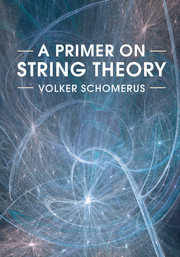
- Cited by 6
-
Cited byCrossref Citations
This Book has been cited by the following publications. This list is generated based on data provided by Crossref.
Knorr, Benjamin and Saueressig, Frank 2018. Towards Reconstructing the Quantum Effective Action of Gravity. Physical Review Letters, Vol. 121, Issue. 16,
Wolk, Brian Jonathan 2020. The underlying geometry of the CAM gauge model of the Standard Model of particle physics. International Journal of Modern Physics A, Vol. 35, Issue. 07, p. 2050037.
Steinwachs, Christian F. 2020. Towards a Unitary, Renormalizable, and Ultraviolet-Complete Quantum Theory of Gravity. Frontiers in Physics, Vol. 8, Issue. ,
Draper, Tom Knorr, Benjamin Ripken, Chris and Saueressig, Frank 2020. Graviton-mediated scattering amplitudes from the quantum effective action. Journal of High Energy Physics, Vol. 2020, Issue. 11,
Angelantonj, Carlo and Florakis, Ioannis 2024. Handbook of Quantum Gravity. p. 1.
Angelantonj, Carlo and Florakis, Ioannis 2024. Handbook of Quantum Gravity. p. 2107.
- Publisher:
- Cambridge University Press
- Online publication date:
- July 2017
- Print publication year:
- 2017
- Online ISBN:
- 9781316672631


